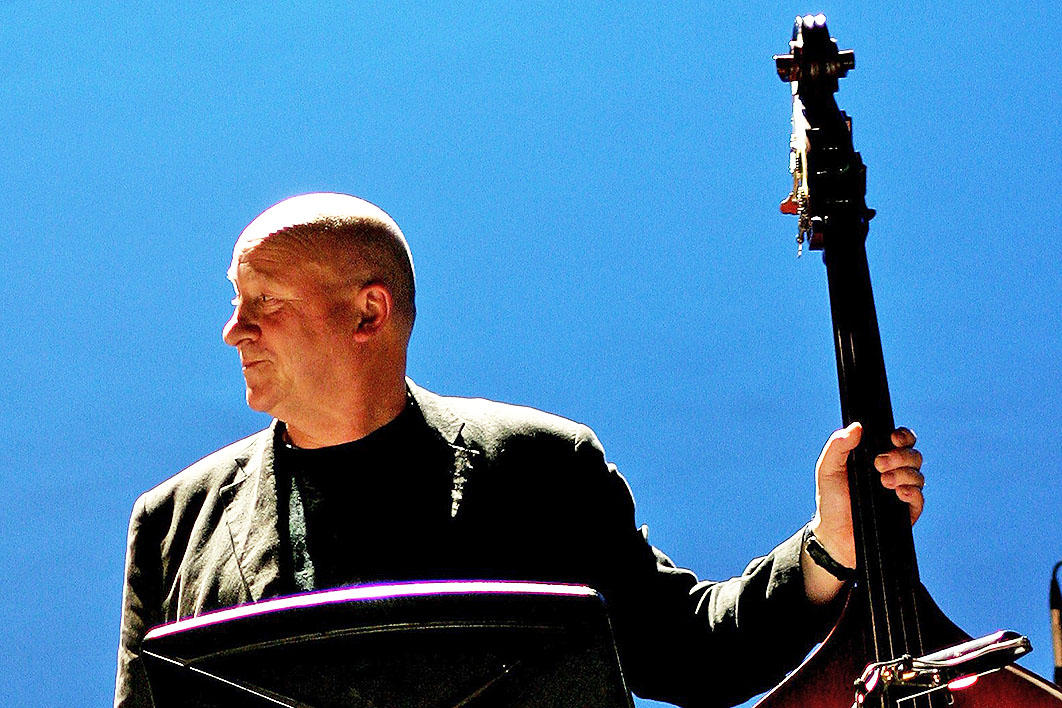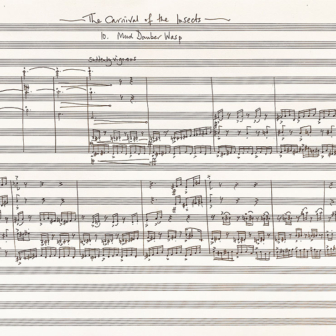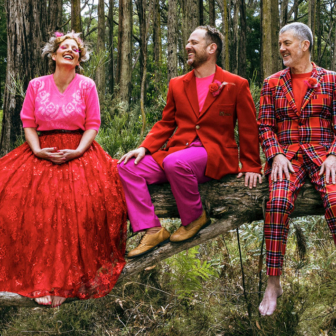Seventy-five years ago, two English composers were born on the same day. It’s an amusing coincidence, because Gavin Bryars and Brian Ferneyhough have almost nothing else in common.
On 16 January 1943, the world was at war. Coventry, the Midlands town where Ferneyhough was born, had suffered one of the Luftwaffe’s most infamous bombing raids, losing two-thirds of its buildings, including its medieval cathedral, in a devastating conflagration. The sleepy Yorkshire town of Goole, in which Bryars was born, experienced its major incident of the war six months later, when two Wellington bombers from nearby RAF Leconfield collided over the river Ouse.
Bryars likes to speculate that this is what made Ferneyhough into a figurehead of the postwar European avant-garde, his name synonymous with fiery modernism, while Bryars himself became a sort of pastoral ironist. It’s a good line, though in its way Bryars’s music is every bit as extreme as Ferneyhough’s.
There are new recordings of both composers’ work and the polarity couldn’t be much starker. The Ferneyhough disc is notable for the inclusion of two works for orchestra. Since Ferneyhough has only ever composed three orchestral pieces and none has previously been recorded, this is quite an event, particularly when you consider that one of these works is a cause célèbre.
La terre est un homme (The Earth Is a Man) was first played in 1979. There were two performances that year, one by the Scottish National Orchestra, the other by the London Symphony Orchestra under Claudio Abbado (in his first concert as the LSO’s chief conductor). Listening to the radio broadcast of the latter, it was very hard to tell what was going on. In this massive score, the orchestra consists of eighty-eight soloists, each player allocated an independent part of unprecedented intricacy, requiring a lot of preparation and individual practice. You can’t show up to a rehearsal and sight-read this piece. Reasoning, perhaps, that no one would ever know whether they were playing the right notes, the musicians acted up. La terre est un homme was not performed again for thirty-two years, when the BBC Symphony Orchestra took it on under conductor Martyn Brabbins.
That’s the performance on this recording, and it’s astonishing. The detail that emerges is consistently compelling and, contrary to my memory of the piece as a never-ending racket, there are sections in which the density of the musical information thins out until just a handful of strings remain — quivering, glistening — before the whole thing blows up again and the piece ends in a noisy cataclysm.
The other orchestral work, Plötzlichkeit (2006) is music of surprises (the German title means “suddenly”). For anyone who only knows Ferneyhough’s earlier music, one of the main surprises is that there are rather a lot of conventional gestures — pulses, repeated rhythms, unisons. You won’t find anything like that in La terre est un homme. The other surprises come from the music’s structure, for this twenty-two-minute work consists of dozens of musical fragments that have nothing to do with each other, except for their adjacency. The child psychologist Jean Piaget pointed out that in life we make connections between things either because they are similar or because they are next to each other. This piece is full of the latter, though the longer we listen, the more our ears seem to find musical similarities. That, after all, is what ears do.
Throw in a superbly confident performance of a Ferneyhough classic — the Missa Brevis of 1966 — sung by the choir Exaudi, and this is quite some CD. But it is music that demands all of your attention. You wouldn’t play it at a dinner party, say, or attempt to listen to it on a train.
The music on Gavin Bryars’s latest album was designed to be heard on a train, specifically the train between Goole and Hull in East Yorkshire. This is a slice of musical autobiography, as charming and nostalgic as Ferneyhough’s works are bracing and visceral.
Like Ferneyhough, Bryars first came to prominence in the 1970s with a piece that divided its listeners. Jesus’ Blood Never Failed Me Yet (1971), still the composer’s most famous work, looped the recording of an old tramp singing a fragment of a revivalist hymn, and wrapped it in layer upon layer of orchestral accompaniment. That’s the piece, all twenty-five-to-seventy minutes of it. It’s insistent, but gently so. If you surrender to the music (and you may find you have no choice) you’ll be hypnotised and very likely moved; if you resist, the piece will almost certainly make you cross.
The Stopping Train (2016) takes us from Bryars’s birthplace to the port city of Hull. The train journey along the banks of the river Humber lasts just over half an hour and so does the music, which is designed to be listened to on the way (there’s a second half to the piece for the return journey). A spoken text by the poet Blake Morrison draws our attention to what we might see out of the window, but this self-reflexive piece is very much about the sentimental education of the young Bryars.
“And so we begin,” Morrison says, “in Goole, where Gavin Bryars began, whose music you’re listening to now…”
Bryars’s instrument is the double bass, and his early musical experiences were mostly jazz-orientated. The music of The Stopping Train is full of allusions to hymns, train rhythms and jazz (specifically Jimmy Giuffre’s “The Train and the River” — well, how could you resist?), played by a quartet of electric guitar, viola, cello and double bass (the composer himself). Not only does the pace of the music match a leisurely train journey, the events in the work are timed to coincide with the train reaching different stations and what you might see out of the window: Gilberdyke, Brough, Ferriby, the Humber Bridge, Hessle, Hull.
I don’t imagine many of Bryars’s listeners will experience the piece in all its site-specific glory, but there’s nothing to stop anyone from listening on the train of their choice. The one I take each week from the NSW Southern Highlands to Sydney allows me to hear the whole recording twice. It, too, is a stopping train. The stations come and go; there are rivers, and bridges over them. It’s surprising how the journey seems to match the music — well, I suppose Piaget wouldn’t have been surprised.
With all music, if we listen hard, we begin to find its world fits ours — and that’s no matter how strange the sounds may at first seem. Bryars’s musical world is perhaps even stranger than Ferneyhough’s, but he invites us in with the wry smile of that “pastoral ironist.” And if Ferneyhough is less welcoming, at least we no longer have the bad attitudes of orchestral musicians blocking our path to an exploration of his uncompromising ideas. •




